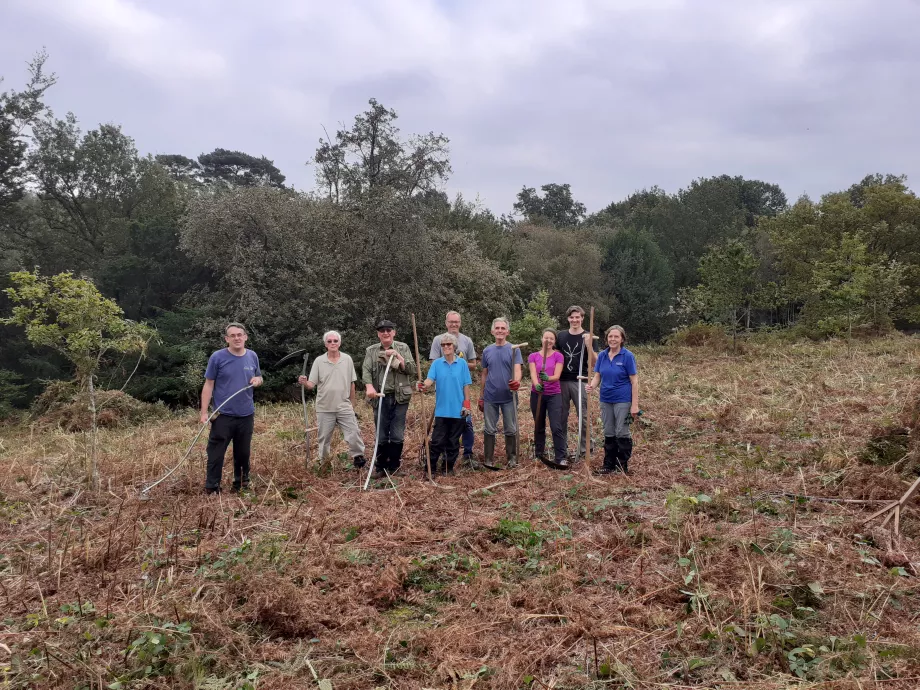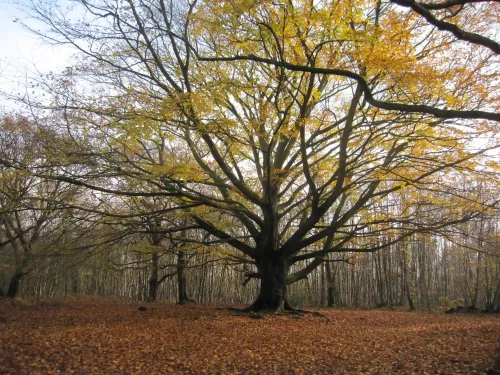
10 must-visit Kent woodlands
Be sure to check out these 10 woods whilst exploring Kent, each offering something a little different across the county.


A project volunteer discovers honey fungus mycelium during the Sevenoaks Common bioblitz.
At Bitchet Common, a variety of techniques have been used to manage invasive bracken. The community have completed bracken surveys, which seek to estimate the density of the bracken and monitor the success of different removal strategies. volunteers have helped to monitor the regrowth of the bracken, allowing the project to identify the most efficient method of control.

Volunteers using scythes to tackle the bracken at Bitchet Common
Following the discovery of the white admiral – a high priority butterfly species – at Crockham Hill Common, we set out to record butterfly populations at eight sites across the commons. After reaching out to the local community, a team of volunteers was created. Volunteers received training on identification and walked routes through the commons every week from July to September. Their records are creating a more accurate understanding of the butterflies of the commons which will inform the management of the land. With over 50% of Britain’s butterfly species now featuring on the IUCN Red List, this work comes at a crucial time when we need to build the resilience of our landscapes in the face of the climate and nature crises.
The project also recently hosted its first bioblitz, an event which brings experts and newcomers together to identify as many species as possible in an area. The project is proud to have identified 75 species at Sevenoaks Common! This achievement was made possible by local families, who joined staff in searching for insects and spying for birds.
The Sevenoaks Greensand Commons event has now come to a close but we are pursuing funding for further practical work. In the meantime, if you'd like to take part in citizen science volunteering in other areas of Kent, please contact us here.

Be sure to check out these 10 woods whilst exploring Kent, each offering something a little different across the county.

Since bison were released into West Blean and Thornden Woods on the outskirts of Canterbury, they have not only transformed the landscape but significantly grown in number.

Natasha Ruskin explores something terrifying: a world without woodlands.